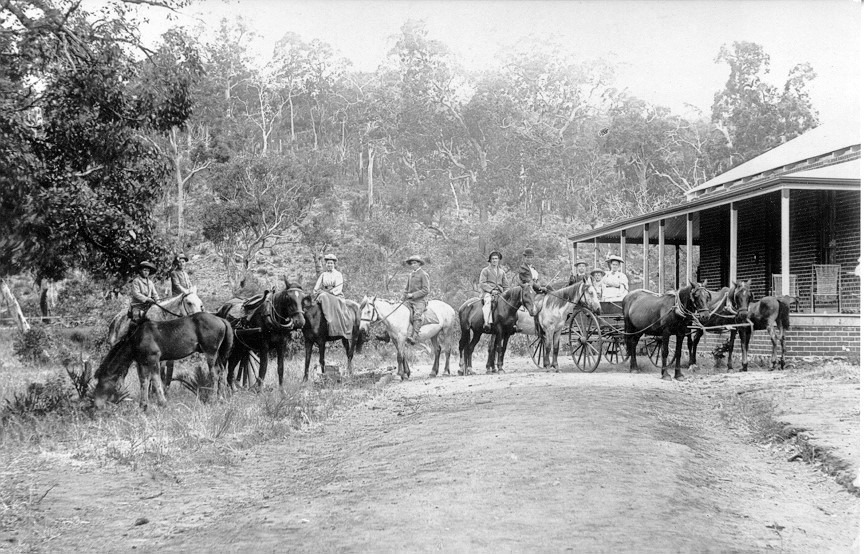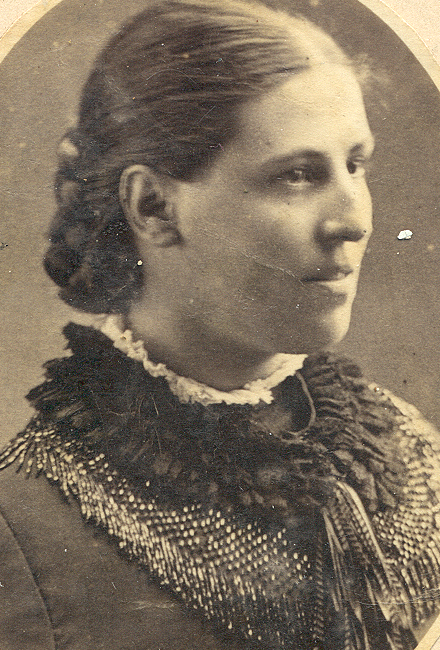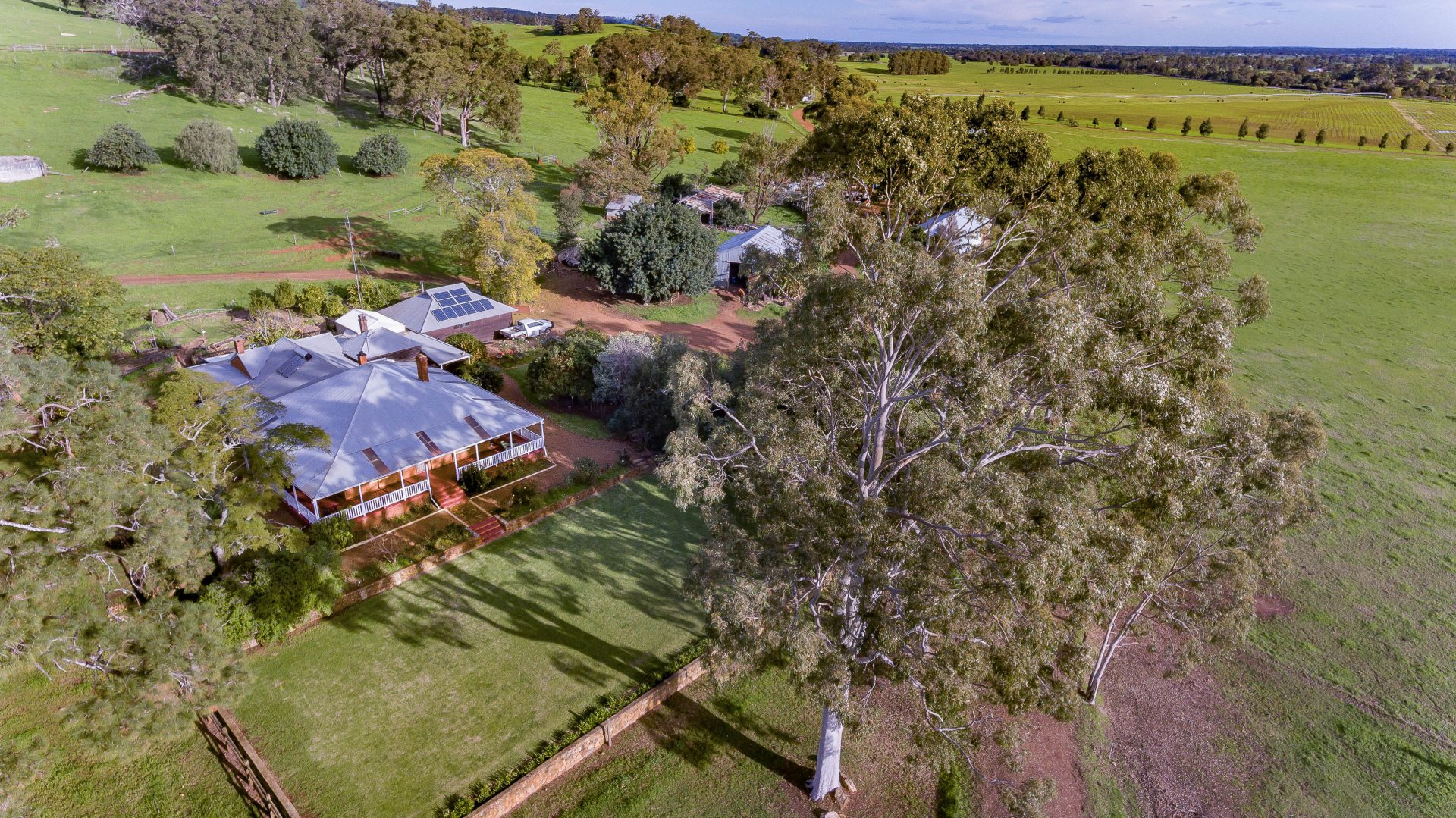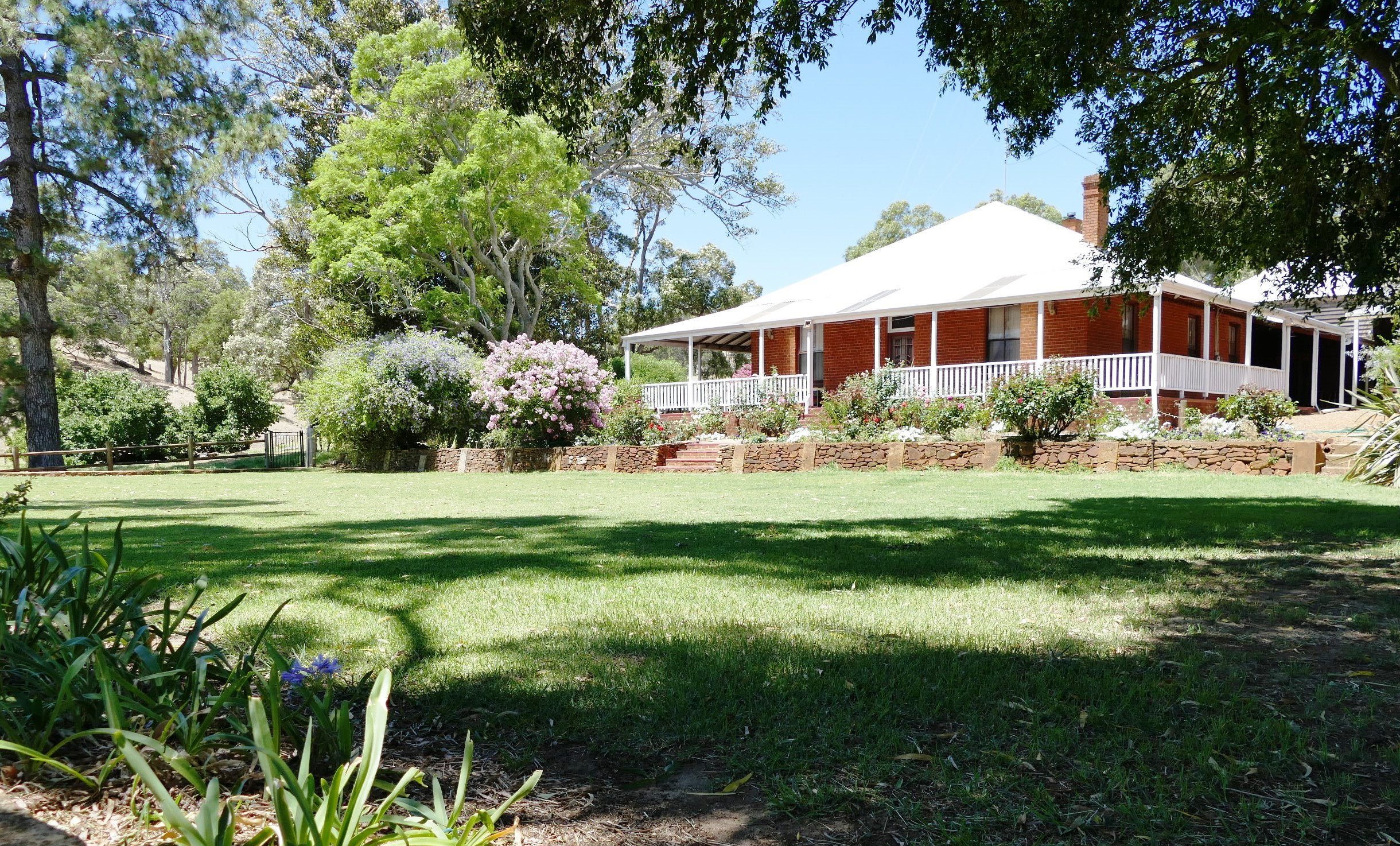- 12311 South Western Highway, Benger WA 6230
- Private residence
Shenfield Farm Historic Site
Built in 1894, Shenfield is one of the original farms and homesteads of the Benger region and continues to operate as a leading property within the area.
Following the death of her husband Henry Partridge Fry in England in 1881, Edith Horatia corresponded with her brother John (‘Jack’) Partridge of White Rocks Farm, Brunswick. She bravely decided to immigrate with her four children – Alice Horatia, Stephen Henry, John Gurney, and Henry Philip.
Edith’s brother John purchased the original parcel of land on her behalf in 1893 and arranged to have a house built before her arrival in October 1894. The property was named Shenfield after the property where Edith and Henry had lived on the outskirts of Brentwood, Essex, England.
Designed by architect Sir Russell Hobbs, the Federation Bungalow style homestead was originally to be built of wood, but John Partridge insisted it was made of brick with an iron roof and verandahs all around the main building, for the tender price of £489/10/-. With extras, the sum total was £520/12/3. The bricks were made on-site.
The house consisted of two buildings – a separate kitchen building and the main living area of the house. The main building consisted of six rooms. The kitchen building consisted of the kitchen and a storeroom. The store room was always referred to as the dairy as it was where the cream was separated and butter churned. These two buildings were later joined by a lean-to breezeway.
School Room
On the south side of the kitchen, a schoolroom constructed of weatherboards with a brick chimney and fireplace was added circa 1912. This was where the older Fry children were taught by a governess prior to the Benger School being opened in 1918. The schoolroom was then used as a dining room.
Farming
Initially, the farm was utilised for mixed farming which included dairy, pigs, sheep, chaff, orchard – oranges to Kalgoorlie and apricots (some of which were sent to the Nuns at Collie), and potatoes – seed spuds vegetables.
The emphasis changed so that beef and seed potato production dominated.
Potatoes were grown commercially until 1972. Two crops per year were grown – a summer crop in the Benger Swamp and a winter crop on the hills. The hill crop was planted using draft horses and a single and a double moldboard plough. This method was used until planting ceased in 1972.
Potato production ceased due to the difficulty in obtaining workers and the amount of chemicals needed in their production.
Currently, the farm runs beef cattle and agisted dairy heifers.
Credit: Wendy Fry






